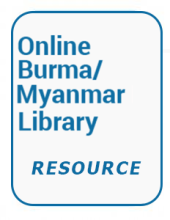Land Library
Bienvenue dans la bibliothèque du Land Portal. Explorez notre vaste collection de ressources en libre accès (plus de 74 000), comprenant des rapports, des articles scientifiques, des articles de recherche, des publications évaluées par des pairs, des documents juridiques, des vidéos et bien plus encore.
/ library resources
Showing items 1 through 9 of 113.While Burma’s ethnic states are blessed with a wealth of natural resources and biodiversity, they
have been cursed by the unsustainable extraction and sale of those resources, which has fuelled
GRAIN is a small international non-profit organisation that works to support small farmers and social movements in their struggles for community-controlled and biodiversity-based food systems.
A Comparative Study of Land Rights Systems in Southeast
Asia and the Potential of National and International Legal
Frameworks and Guidelines....."Land rights systems in Southeast Asia are in constant
No such thing as a “clean concession” or
“idle land”...Insecure tenure represents a material
financial and reputational risk....Case analysis reveals drivers of tenure-
related conflict....Primary cause of dispute in agricultural
investment is rarely compensation...
... Namati offers this brief in the hope that Myanmar’s national reforms and the implementation of the country’s new National Land Use Policy can grow from the lived experience of ordinary Myanmar citizens.
... Myanmar’s forest and timber sector has been central to the country’s economy and society, particularly over the last century. Since the colonial era, timber has been a major export revenue earner to Burma/Myanmar and thus subject to much political debate (Bryant 1996).
Paper prepared for presentation at the 2016 WORLD BANK CONFERENCE ON LAND AND POVERTY, The World Bank - Washington DC, March 14-18, 2016
...the customary rights of communities and
Indigenous Peoples to forests, rangelands, and wetlands are often not
written down or shown on government maps, but they are a fundamental
reality. They cover more than 50 percent of the world’s land surface, yet
This step-by-step guide aims to help community-based organizations and advocates working to help communities protect their customary claims and rights to land and natural resources. It provides tools to:
● Prepare communities for negotiations with investors

